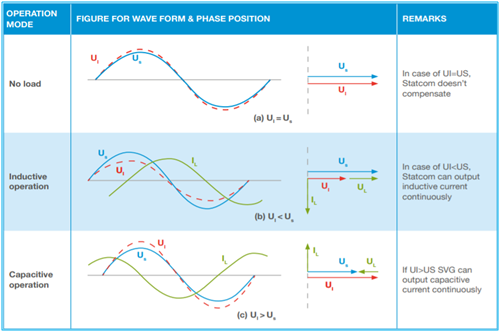Posted by Nastech on 28th Feb 2025
Exploring the Night SVG Function in Solis On-Grid Inverters
The world of solar energy is rapidly advancing, with manufacturers constantly introducing innovative features to enhance efficiency and reliability. One of these advancements in the realm of solar inverters is the Night Static Var Generator (Night SVG) function found in Solis on-grid inverters. This feature is specifically designed to address power quality issues during non-solar hours, which is crucial for modern energy grids. Let’s explore the Night SVG function in detail, understand its benefits, and how it plays a role in enhancing overall grid performance.

What is the Night SVG Function?
In an ideal grid system, voltage and current are perfectly aligned, ensuring that all energy supplied is efficiently used. However, in real-world scenarios, several factors cause misalignment, leading to reactive power—essentially wasted energy. Reactive power can strain the grid, reduce the capacity to carry real power, and cause voltage instability.
The Night SVG function in Solis inverters is designed to mitigate these power quality issues during the night or when the solar panels are inactive. SVG (Static Var Generator) is a type of advanced reactive power compensator. It continuously monitors grid conditions and generates reactive power to correct the power factor (the alignment between voltage and current). By doing so, it helps balance the grid and reduce losses.
The addition of the Night SVG function means that even when the solar panels aren’t producing power (at night or during cloudy conditions), the inverter is still able to perform reactive power compensation, ensuring smoother and more stable grid operation.
How Does the Night SVG Function Work?
Here’s a simplified breakdown of how the Night SVG function operates:
- Real-Time Grid Monitoring: The Solis inverter constantly monitors grid parameters like voltage, current, and power factor.
- Reactive Power Detection: When the system detects that reactive power is present in the grid (due to a misalignment of voltage and current), it calculates the necessary correction to improve the power factor.
- Reactive Power Generation: The Night SVG function activates, generating the required reactive power and injecting it into the grid. This action helps to realign voltage and current, reducing the reactive power and enhancing power quality.
- Continuous Operation: Unlike traditional solar inverter systems that are idle at night, the Night SVG allows the inverter to remain active and contribute to grid stability even when there’s no sunlight.
Key Benefits of Night SVG in Solis Inverters
- Enhanced Grid Stability: By compensating for reactive power during off-solar hours, the Night SVG function contributes to overall grid stability, especially during peak nighttime usage when voltage issues are more likely to occur.
- Improved Power Factor: A poor power factor can result in higher electricity costs and reduced efficiency. The Night SVG function continuously corrects the power factor, ensuring that energy usage is more efficient for both utilities and end-users.
- Reduced Grid Losses: By correcting reactive power issues, the Night SVG function helps to reduce the strain on the grid, resulting in lower transmission losses and better overall efficiency for the grid infrastructure.
- Cost Savings for Users: Depending on the region and the electricity pricing structure, users might incur costs for reactive power consumption. By ensuring a better power factor, the Night SVG function could lead to reduced energy costs, especially for large commercial installations.
- Prolonged Inverter Lifespan: Since the inverter remains engaged in maintaining grid health, it reduces the risk of voltage-related issues that could otherwise shorten the lifespan of connected devices or the inverter itself.
Use Cases for Night SVG
- Commercial and Industrial Applications: In commercial buildings and industrial plants, where the demand for energy remains high even at night, the Night SVG function can help manage power quality and reduce operational costs related to reactive power.
- Microgrid and Smart Grid Systems: As grids become more decentralized and incorporate renewable energy, features like Night SVG become essential for ensuring that microgrids and smart grids maintain balance, especially during periods of no renewable energy generation.
- Energy Storage Systems (ESS) Integration: While energy storage systems can store excess power for later use, reactive power issues can still arise. The Night SVG function complements ESS setups by improving power quality and grid integration when stored energy is being used.
Conclusion
The Night SVG function in Solis on-grid inverters is a powerful feature that addresses a critical issue in modern energy systems—reactive power and power quality during non-solar hours. As the demand for energy grows and more renewable energy sources are integrated into the grid, such innovations are key to maintaining stability and efficiency.
By ensuring that the grid remains balanced and power quality is high, the Night SVG function not only supports the broader energy infrastructure but also helps businesses and residential users optimize their energy consumption, reduce costs, and extend the life of their equipment.
For anyone looking to invest in solar energy systems, particularly inverters with advanced features, the Night SVG function in Solis inverters represents a forward-thinking solution to modern energy challenges.


